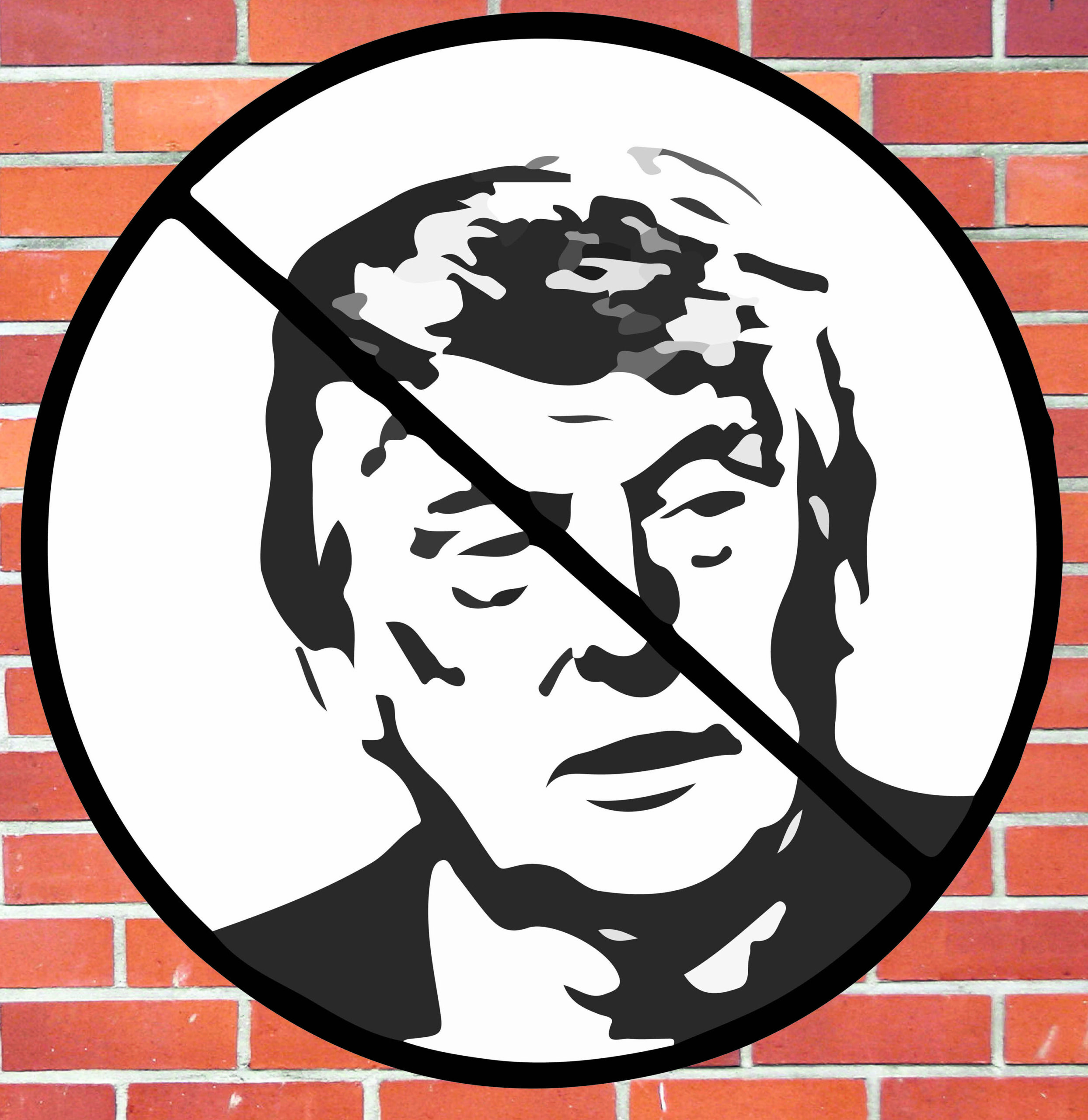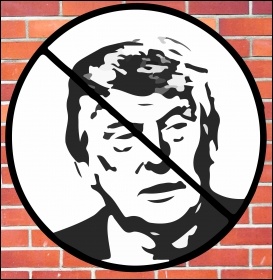- Building a movement of opposition and a working class political alternative are key tasks for the left
Donald Trump’s first 100 days in the White House have been characterised by political defeats, administrative chaos and incompetence. For sure he has signed-off several reactionary decrees, especially on undoing environmental protection, but as Calvin Priest of Socialist Alternative (US co-thinkers of the Socialist Party) argues, Trump’s agenda can be halted.
A damaged Trump administration continues to hunt for a way forward from the series of humiliating defeats it has suffered in its first months in power. These setbacks, and in particular the collapse of Republican healthcare plans (“Trumpcare”), have also fundamentally undermined Trump’s ability to make progress on key parts of his and the Republican agenda.
The ongoing wave of mass protests since Trump’s inauguration have underscored the complete lack of a mandate for his right-wing policies. The defeat of Trumpcare and the Muslim travel ban, as well as the departure of key cabinet appointments under pressure, have shown that the Trump agenda can be beaten back.
When Trumpcare was killed on 24 March, it was after being brought down to just 17% support in the polls following opposition in town halls and at rallies around the country. Trump’s approval ratings followed suit, hitting a new low of 35% in the days after the defeat, worse than Richard Nixon’s during the Watergate hearings.
But while Trump is down, he is not out. And there are few things more dangerous than a bully who is bruised and backed into a corner.
The situation remains contradictory and unpredictable. Some of the most right-wing and reactionary parts of Trump’s domestic agenda are continuing to forge ahead.
U-turns and zig-zags
Meanwhile, Trump’s defeats, which have intensified the crisis in his administration, have also pushed him in many areas toward policies more acceptable to the Republican establishment and the ruling elite, though also deeply hostile towards the working class.
The markets were booming after Trump’s election with the prospect of further corporate deregulation, more tax cuts for the wealthy, and handouts to weapons manufacturers. With Trump’s standing now weakened and increased international instability, the temporary boom seems to be over, potentially paving the way for deeper economic crisis.
But perhaps the most fundamental change in Trump’s approach is in regards to foreign policy, where Trump appears to be abandoning his earlier isolationist views, and is instead beginning to tap into the established and bloody playbook of diverting attention from domestic troubles by military means.
Trump is increasingly looking to recast his presidency as that of a strong commander-in-chief who is not afraid to reassert American military might. The airstrikes in Syria and overall shift in the administration’s approach was preceded by a shakeup in the National Security Council with arch-racist and “America First” ideologue Stephen Bannon taken off the body and ‘hawkish’ mainstream advisers and generals promoted.
Trump had long maintained that he was against intervention in Syria, and greater involvement in the region. The attack is also part of a change in relations with Russia, the major power behind Assad’s regime.
Trump had of course long refused to criticise Vladimir Putin in spite of enormous pressure to do so both during and after his election, saying Putin was “doing a great job” and calling him a “stronger leader” than Barack Obama.
Following the Syria attack, secretary of state Rex Tillerson blamed Putin for the chemical weapons atrocity in Syria, as well as for meddling with US elections in spite of Trump’s long-time insistence that Russia had not.
While the Syrian attack may be a “one off” event, the door has been left open for further action against Assad, with US ambassador to the UN Nikki Haley coming close to calling for regime change.
The dropping of a “mother of all bombs” on Afghanistan, the strongest non-nuclear device in the US arsenal, for the first time in history, is another demonstration of the many sided shift toward a more aggressive foreign policy.
Civilian deaths have risen substantially in Iraq and Syria as the Trump administration has been giving the generals freer rein in the region.
Trump’s recent pivot on China is almost as dramatic as his pivot on Russia. In recent days Trump has abandoned his claim that China is a currency manipulator after already backing off on his threat to abandon the ‘One China’ policy. China in turn prepared to make a few concessions to avert an enormously damaging trade war.
But the administration’s threats toward North Korea could inflame relations with China, which sees already the moves against the country as a threat to China’s authority in the region.
While nervous about many of these developments, leading Democrats, the ruling class, and the corporate media broadly support both Trump’s attack on Syria and his shifting position toward Putin.
As socialists, we offer no support for any of these regimes. We completely oppose the vicious dictatorship in Syria. But we also oppose the long history of brutal interventions by US and Western governments in the Middle East, which have led to the rise of Isis and are the main source of the crisis in the region.
We oppose both Assad and Trump, and stand for workers’ unity and the building of a broad working-class movement to cut across religious and sectarian divisions and to fight for a socialist alternative internationally.
Republican Party
The deep crisis within the Republican Party was put on full display by the Trumpcare defeat. A section of more moderate Republicans refused to hitch their wagons to the hugely unpopular plan for fear of signing their political obituaries. Meanwhile, the far-right wing of the party grouped around the Freedom Caucus refused to back it on the basis that it did not go far enough in attacking working people.
Trumpcare was also defeated by mobilised opposition. The healthcare bill became increasingly toxic as Trumpcare was shouted down at town halls around the country and mass rallies and marches against Trumpcare and for single-payer healthcare (like the NHS) were held in many cities.
People got the message that tens of millions would be cut from healthcare; that Medicaid, which covers one in five Americans, would be gutted; and that this ‘reform’ was really a cover for a massive tax cut and transfer of wealth to the top 1%.
Budget chaos
The defeat of the bill blew a gaping hole in the budget plans, and created major complications for their 2017 agenda. Budget plans for big tax cuts for corporations and the wealthiest Americans, a 10% expansion in military spending, and the financial space for an infrastructure bill at some stage, is now in disarray.
The budget proposals also include deep cuts to public education, the Environmental Protection Agency, mass transit, renewable energy, public water systems, environmental clean-up, and across-the-board attacks on social services. This is not to mention the ripping up of environmental regulation by executive order.
In the event a stop-gap spending bill was agreed by Congress to avert a government shutdown.
Altogether, the current Republican agenda rep-resents one of the most vicious assaults on the American working class in modern history, as well as an all-out declaration of war on the environment.
Democratic leaders
Much of the Democrats’ opposition to Trump has centred on his administration’s and election campaign’s links to Russia, rather than firmly or consistently opposing his reactionary agenda and appointments, or helping to build social movements.
Kshama Sawant, Socialist Alternative city council member in Seattle, has called repeatedly for Democratic-led state governments in Washington, Oregon and California to take the lead in creating a single-payer alternative on the West Coast.
Support for a single-payer healthcare system is at an all-time high. Yet key Democrats have already rejected the call for it.
Bernie Sanders’ talk at a West Virginia town hall in March showed again the dramatic opening for working-class politics as Republican-voting former coal miners embraced his class appeal and call for Medicare for All.
The situation is crying out for a new, class-based political force but the main energy at the moment will clearly go to getting the Democrats back in power.
Socialist Alternative has called on the Democratic Socialists of America (a left activist organisation) to join us in running ten socialist and left independent candidates in 2017 to begin building an alternative to corporate Democrats.
In Seattle, we are supporting the campaigns of Jon Grant and Nikkita Oliver, who are running as left independent candidates, and are rejecting donations from big business.
In Minneapolis, Socialist Alternative is spearheading the campaign for Ginger Jentzen, director of 15 Now Minneapolis, on a campaign for a $15 minimum wage and rent control, while accepting no corporate money.
There is the space to build a new socialist party in the US with tens of thousands of members, based on social movements and building a fighting opposition to the right wing, as a step towards a new mass party of the working class.









